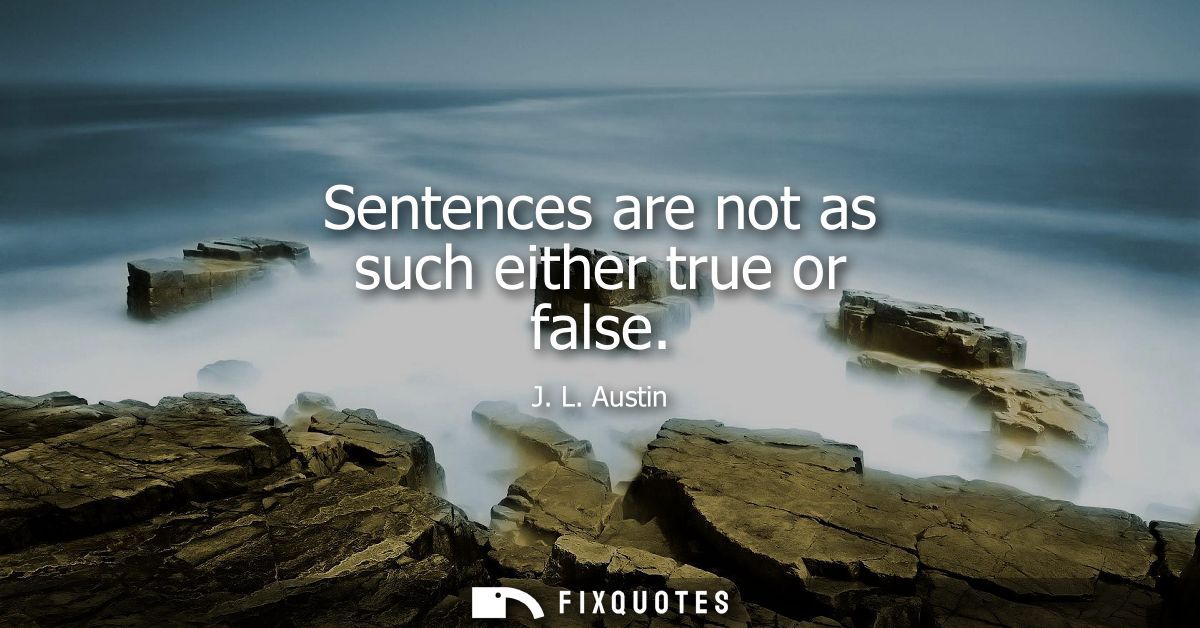"Sentences are not as such either true or false"
About this Quote
J. L. Austin's assertion that "Sentences are not as such either true or false" reflects a nuanced understanding of language that challenges standard notions of linguistic fact. In this declaration, Austin is highlighting the concept that truth-value does not naturally belong to sentences on their own. Rather, the fact or falsehood of a sentence rests upon contextual elements and the intentions behind its use.
According to Austin's viewpoint, particularly as gone over in his theory of speech acts, the significance and truth-value of language emerge from its function in communication rather than from its mere structural kind. Speech acts theory differentiates between various sort of utterances-- constatives, which intend to explain reality and can be real or false, and performatives, which carry out an action and are not about truth but about the success or appropriateness of the act they perform. For example, when somebody states "I apologize", the sentence is not about verifying a fact but about performing the act of apologizing.
Moreover, sentences acquire their truth-value in particular contexts. The context consists of speaker intent, the circumstance's conditions, and the shared background knowledge of individuals in the conversation. For instance, the sentence "The cat is on the mat" can be real or false depending upon whether there is a specific cat and mat present and observable in the relevant context.
In addition, Austin presumes that language is not simply a medium for representing truth but is also action-oriented. Utterances do things to and in the world-- they assure, alert, state, question, and more. For that reason, focusing entirely on the truth-functional element of language limitations one's understanding of its complete potential and intricacy.
In conclusion, Austin's declaration provocatively asks us to reassess the relationship between language and reality. Sentences, on their own, lack intrinsic truth-value; they obtain such qualities from their practical usage, the speaker's intent, and the surrounding context in which they are utilized. This perspective expands the scope of linguistic analysis by incorporating the performative aspects of language usage.
About the Author

